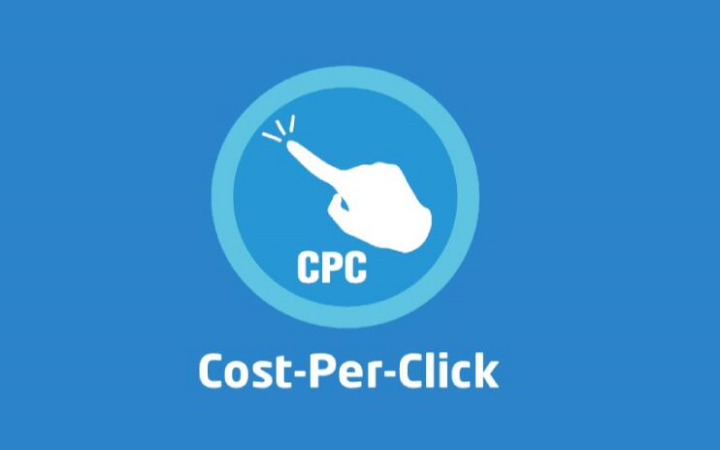The effectiveness of this method in exploiting brands’ potential in the saturated market has more benefits compared to the backward forms of innovation and the sheltering echo chamber of familiarity. The cardinal rule is to be creative by either being different, better, or giving something small that is extra. Frankly, the risks and downsides that come with comparative advertising are enormous, so it is not just exciting but also uncomfortable to gamble things on it. This overview encapsulates the depth and breadth of comparative advertisements, giving you a bird’s eye view of the strategy to be successful.

What is Comparative Advertising?
Comparing ads involves directly comparing your product or service to a competitor’s to show the differences and promote your offering as best in class. This particular form of advertising can easily be utilized in markets where there are many choices available to consumers, and they need simple and clear reasons to select one product over another.
Key Features:
- Direct Comparison: The main factor in comparative advertising is the clear emphasis on the explicit comparison of two or more brands.
- Highlighting Differences: The prime objective is to offer a preview of your product or service’s exclusive features and advantages.
- Consumer Education: This ad type of advertising is facilitated by clear comparisons, which allow consumers to make more informed purchase decisions.
Pros and Cons of Comparative Advertising
Like any marketing approach, the supposed ad war has its benefits and drawbacks. Exposing both can help you decide whether publicizing your brand is the right course of action.
Pros:
- Differentiation: Helps your brand to be recognized by underlining its unique aspects through competition.
- Consumer Clarity: Provide short, simple, and clear explanations, such as what is being compared to what.
- Competitive Edge: This means promoting your product above all others by directly comparing it to the competitors; hence, you have an advantage.
Cons:
- Legal Risks: Comparative advertisements can lead to legal clashes if the claims are not viable.
- Negative Perception: Some consumers might view comparative ads negatively or even aggressively.
- Backfire Potential: The wrong execution of the marketing strategy may cost you your customer’s trust and a negative image of your brand.
Comparative Advertising vs. Competitive Advertising
When used wrongly, these words, which refer to comparative and competitive advertising, can be misleading since they both have unique attributes.
Comparative Advertising:
- Direct Comparison: It does not beat around the bush and calls a particular object by the name of a competitor or a certain product.
- Focus: Identify particular disparities to define your product as the best.
Competitive Advertising:
- Implicit Comparison: The competitors’ names may not be mentioned directly, but they may allude to them in other ways.
- Focus: It is mainly oriented towards general market positioning, as opposed to direct comparisons.
Creating Effective Comparative Advertising
Step 1: Carry Out Market Exploration
The most important step to the success of any advertising campaign is the detailed study of the market. Being aware of your opponents, your target audience, and the current industry situation is necessary to compose noticeable comparative ads.
Key Actions:
- Competitors Identification: Make a catalog of your main rivals and specify their pros and cons.
- Know your audience better: Conduct surveys, use focus groups, and use data analytics to get actual information about your client’s needs, preferences, and problems related to the person.
- Know the Market Situation: Keep up with industry progress, consumer habits, and green cliches that can help you understand your market.
Tools:
- Market research platforms such as Fatbit and ComScore.
- Customer feedback tools, such as SurveyMonkey and Qualtrics.
- Social media listening tools such as Hootsuite and Brandwatch.
Step 2: Develop Clear Messaging
Your meant-to-be message should clearly and precisely portray the real benefits of your product or service. Comparative advertising works best when it enumerates the specific benefits that are most desirable to your target audience.
Key Actions:
- State Your Unique Selling Proposition: What sets your product or service apart from the rest of the products or services? Point out the particular features or advantages that allow your competition to surpass you.
- Forge a Fascinating Tale: Apply the use of stories to add more enthusiasm and recall to your communication. Distinguish real-world scenarios where your product is the best of the lot.
- Make Just and Objective Assessments: Your descriptions should be fact-based and able to be checked to see if they are true. False claims can hurt your reputation and cause you legal troubles.
Example:
If you’re selling a new smartphone, the marketing message could emphasize its longer battery life, excellent camera capabilities, or other distinguished features that competitors lack.
Step 3: From Storytelling to Visuals
Ad visuals are even more important in comparative advertising. Visual communication is the shortest and simplest way to glimpse a product and recall it from memory, reinforcing the advertisement’s effectiveness.
Main Steps:
- High-quality photos and graphics: Ensure that all visual elements are of professional and high-resolution quality.
- Visual Comparison Technique: Credit goes to the strategy’s effective visual display, such as split screen, circle chart, and infographic-like descriptive tools, to show how your differences are carried out.
- Brand Uniformity: Your visuals should fit in with your common brand look and feel.
Materials:
- Design instruments, including Canva and Adobe Creative Cloud.
- Infographic fabricators such as Piktochart and Venngage.
Step 4: Choose the Right Channels
Comparing your ads across different channels requires you to choose the correct channels. Such a method will help you in finding your target audience. You can select specific channels to suit your audience effectively. Engagement and popularity are the main variables that make the channels different from one another.
Key Actions:
- Differentiate Preferred Channels: Know where your target audience is active. It could be social media, search engines, and industry-specific websites.
- Employ Various Platforms: Create a blend of channels to broaden your connection. Social media, email marketing, and paid search can be highly effective when combined.
- Evaluate Channel Performance: Assess the performance of each channel to gradually create a winning strategy.
Example:
Consider prioritizing Instagram and LinkedIn, where young professionals are the most active, to attract a large portion of this age group. You can even denounce some of the restricted websites if you find any.
Step 5: Measure and Analyze Results
Post to the comparative ad campaign, it’s important to observe how well it does and to dissect the results first through deep analysis. That way, you will know what was successful and what was not and how to make your future campaigns better.
Here’s your order:
- Track Your Most Important Figures: Keep a close eye on your performance indicators like click-through rates, conversion rates, share of engagement, and ROI. The data necessary can be obtained from tools such as Google Analytics and social media insights.
- Ask for Feedback: You can get the feedback you are looking for from the audience of the advertisement you want to show them through surveys, comments, and direct messages.
- Learn from Failure: Collect the feedback and data and use them to assess and adjust your strategy carefully. Look for weak areas and act to make the changes that will improve outcomes in future campaigns.
Best Practices for Comparative Advertising
Be Honest and Truthful
Transparency is the key to effective comparative advertising. Ensure all claims are fact-based and capable of being demonstrated. Marketing campaigns that are not truthful can ruin your reputation and get you in legal trouble.
Cultivate Professionalism
Using formal language does not have to rule over every aspect of the communication. However, when promoting your brand, do not make fun of your competitors or use derogatory language. Stick to highlighting the positive aspects of your product and avoid denigrating the opponents.
Stay Within Legal Boundaries
In different states, there are specific guidelines that control comparative advertising. Learn the local regulations properly to avoid legal entanglements. For example, in the USA, the main authority, the Federal Trade Commission, can enforce regulations of advertising\’s truthfulness and non-deception.
Emphasize the Key Differentiators
Choose which parts of the product differentiate it the most. These might include the unique features that you are proud of, a better price, or the best quality, among others. Product advantages are real, and they should be compared not only to inform but also to elicit the response of your desired customer base.
Test Your Campaign
Try out a test before exposing your product to a wider audience. Ask various questions and judge the effectiveness of the sales funnels or other metrics to measure the results. Implementing new ways of doing things influenced the responses, and the outcome was to try to achieve maximum impact.
Keep Track of What Competitors Do
Be aware of how other companies react to your advertisement. This can give you an idea of what’s working and what’s not and will help you tweak your approach. Sometimes, you will have to readapt if your rivals follow their tactics to refute you.
Best Comparative Advertising Examples
Example 1: Pepsi vs. Coca-Cola
Pepsi is one of the best-known proponents of competitive advertising against Coca-Cola, and a touch of humor is always present in its messenger versions.
Example 2: Apple vs. Microsoft
Also, called “Switch to Mac” by Apple, the “Get a Mac” campaign featured Mac computers versus PCs, using jokes to illustrate what Macs and PCs can do and why the PC is way harder. All these ads were very effective in rapidly increasing Apple’s sales and in making it better known.
Example 3: Samsung vs. Apple
Samsung also supported the intellectual property rights controversy through its ads, promoting its smartphones over Apple phones using the Galaxy series to iPhone Owners. The stories of actual people who bought Samsung because of its better battery life and amazing features are impressive and show the effectiveness of Samsung’s advertising campaign in influencing potential iPhone buyers.
FAQs
Can small businesses effectively use comparative advertising?
Affirmative, indeed, small businesses can profit from comparative advertising by highlighting their unique value propositions and other points of distinction from the other large competitors.
How do I handle competitor responses to my comparative advertising?
Get ready for counter-campaigns and the various responses from the rival companies. Stay professional, stick to the facts, and don’t escalate.
Can comparative advertising backfire?
Oh, yes, how it is done could lead to some unfavorable consequences such as cases brought up to court, deterioration of the brand, and the other brands addressing with aggressive tactics. So, to begin with, see to it that your campaign is in the context of goodwill, honesty, and concentration on the strengths you have, yet avoiding a direct hit.
Final Thoughts
Comparative advertising is one of the most effective methods when used correctly. It can distinguish your product from competitors, gain the consumers’ attention, and create trust. Even so, it is important to be cautious, distinguishing that all statements are valid and respectful. Correctly, comparative advertising is a strongly influential weapon in your marketing tool kit.
When are you ready to upgrade your marketing plan? Inject all these nuggets into your newest marketing campaign and notice your brand magnifying in the very crowded array! For more personalized advice, we are glad to serve you with a consultation with our expert marketing team today.
Posts you may be interested in:


